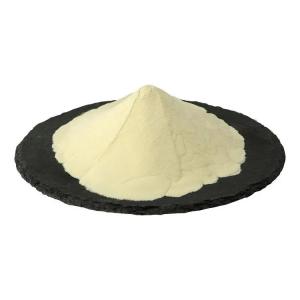Phosphatidyl serine is used in chewy granola bars.
Time:2025-08-06Phosphatidylserine (PS) is a naturally occurring phospholipid found in high concentrations in the human brain. As a key component of cell membranes, it plays a fundamental role in maintaining cellular structure and fluidity. In recent years, phosphatidylserine has gained attention as a functional food ingredient, and its incorporation into convenient food products such as chewy granola bars reflects the growing demand for health-oriented snacks.
What is Phosphatidylserine?
Phosphatidylserine is a phospholipid molecule composed of two fatty acid tails and a serine-containing head group. It is naturally present in foods like soybeans, white beans, egg yolks, and certain animal organs. Commercially, PS is often derived from soy lecithin or sunflower lecithin through enzymatic modification or extraction processes, resulting in a plant-based form suitable for various dietary preferences.
Application in Chewy Granola Bars
Chewy granola bars are popular snack options that combine convenience, taste, and nutrition. They typically consist of ingredients such as rolled oats, dried fruits, nuts, seeds, syrups, and sometimes chocolate or yogurt coatings. Phosphatidylserine can be seamlessly incorporated into these bars as a powdered or emulsified additive.
Benefits of Inclusion
Functional Enrichment: Adding phosphatidylserine enhances the functional profile of granola bars, appealing to consumers seeking cognitive-supportive nutrients or brain-friendly snacks.
Stable Integration: Phosphatidylserine is stable under typical processing temperatures used in the preparation of chewy granola bars. It does not significantly alter the flavor or texture of the final product when used at recommended levels.
Synergy with Other Ingredients: The lipid nature of PS allows it to interact well with ingredients such as nuts and seeds, which are also rich in healthy fats. This compatibility aids in the uniform distribution of PS throughout the bar matrix.
Formulation Considerations
To ensure the optimal performance and stability of phosphatidylserine in chewy granola bars, formulators must consider several factors:
Dosage: Depending on the desired nutritional claim or target market, the PS content may vary, usually ranging from 50 mg to 200 mg per serving.
Moisture Control: As PS is susceptible to hydrolysis in the presence of water, controlling the moisture content of the granola bar is important.
Packaging: Oxygen and humidity-barrier packaging can extend the shelf life of products containing phosphatidylserine.
Market Trends and Consumer Appeal
The inclusion of phosphatidylserine aligns with current consumer trends favoring functional snacks, nootropic ingredients, and brain health support. As awareness of phospholipid-based supplementation grows, products like chewy granola bars provide an accessible and enjoyable delivery format.
Additionally, PS-enriched granola bars fit well within the clean-label movement when derived from non-GMO soy or sunflower sources. Brands may highlight PS on product labels to distinguish their offerings and attract health-conscious shoppers.
Conclusion
Phosphatidylserine represents a valuable addition to chewy granola bars, bringing both functional appeal and nutritional depth. Its compatibility with existing ingredients and stable nature make it a practical choice for manufacturers aiming to innovate in the functional snack segment. As consumer demand for brain-supportive and performance-enhancing foods increases, phosphatidylserine-fortified granola bars are poised to occupy a meaningful space in the marketplace.


 CN
CN





